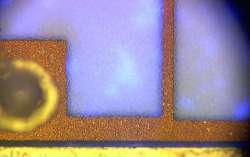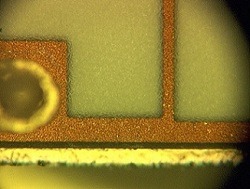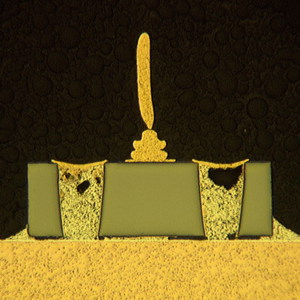Optical Microscopy
Samples are examined using high-power optical microscopes. Colors and textures are rendered in familiar ways, readily providing qualitative information.
Samples can be analyzed in reflection, transmission, dark field and polarized light. Software applications allow us to generate a high resolution composite image by stitching multiple images obtained from larger samples.
Fluorescence microscopy involves the excitation of the sample at one wavelength, with our equipment it is 365nm in the ultraviolet, and observation at another wavelength, typically in the visual spectral range. This technique is useful for the detection of embedded organic particles that would otherwise go unnoticed.


Optical images of blue LED, lit and unlit

GaN transistor cross-section
Structure studies of thin films
Analysis of grains, precipitates or particulates
DPA studies
Reverse engineering
Contamination analysis
Failure analysis
